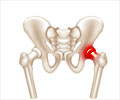Osteoporosis Screening Test
Who should undergo screening for osteoporosis?
How frequently does the screening test need to be repeated?
Though there are no definite recommendations for repeating the test in an individual who has had a negative test, it may be repeated after a minimum of 2 years.
How is screening for osteoporosis done?
Screening for osteoporosis is done using a Bone Mineral Density scan or a DEXA scan (Dual Energy X-ray Absorptiometry Scan). The scan measures bone density usually at the hips or the spine. The patient needs to lie still on the table while the scan is done. The density is measured in terms of a score called the T-score.
- T-score of less or equal to -2.5 indicates osteoporosis.
- T-score between -1 and -2.5 indicates a milder form of the disease called osteopenia. People in this range are at a high risk for developing osteoporosis.
Peripheral DEXA machines are also used that measure bone density at the heel, forearm and fingers. Quantitative ultrasound of the heel is also sometimes used in screening for osteoporosis.








